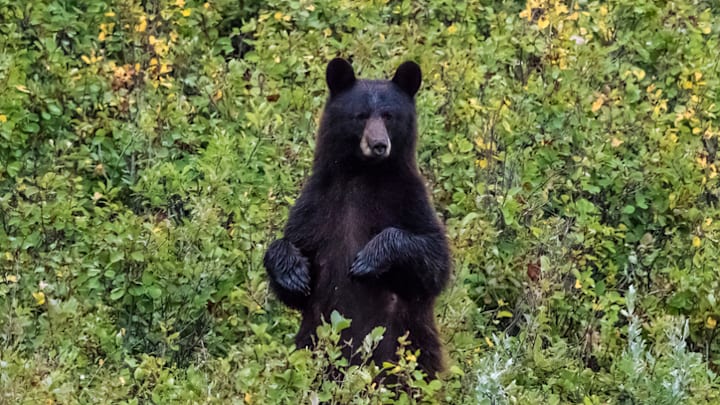Bears are blamed for a lot of things that aren’t their fault: They’ve been implicated for moonlighting as the Himalayan Yeti. Visitors at a Chinese zoo accused a sun bear of actually being a human in a bear suit. Grizzly bears’ seasonal weight gain is displayed for public judgment. Now, a study published earlier this year in the Journal of Zoology suggests humans are mistaking American black bears (Ursus americanus) for Bigfoot.
Its author, data scientist Floe Foxon—who is fond of titling cryptozoological studies with rhyming phrases (“The Loch Ness Monster: If It’s Real, Could It Be an Eel?,” “If Not a Fake, What’s in the Lake?”)—hypothesized that the more black bears there are in a given area, the more likely it is that people will report cryptid sightings. In other words, if Bigfoot is there, it could be a bear.
Previous studies have found a link between alleged Bigfoot encounters and black bear populations in the Pacific Northwest, long believed to be sasquatches’ natural habitat. In an expanded analysis, Foxon compared the most recent information for bear populations in 37 U.S. states and seven Canadian provinces with the Bigfoot Field Researchers Organization’s dataset of alleged sightings, adjusting for human populations and natural area, to model the correlation for all of the U.S. and Canada.
The study found that sasquatch reports were “statistically significantly” associated with black bear populations. For every 1000 bears in an area, Foxon found a 4 percent increase in the number of Bigfoot sightings. Across North America, each sasquatch report was associated with about 5000 black bears.
“Based on statistical considerations, it is likely that many supposed sasquatch are really misidentified known forms,” Foxon concluded in the study.
It’s understandable that people mistake the native carnivore for the fictitious hominid. Both bear and sasquatch are thought to stand about 6 feet tall (if the bear is upright on its hind legs), be covered in dark hair or fur, and live in temperate forests. And they’re not the only pair of frequently confused animals out there. Here’s how to differentiate wallabies and kangaroos, leopards and jaguars, rats and mice, and more.
